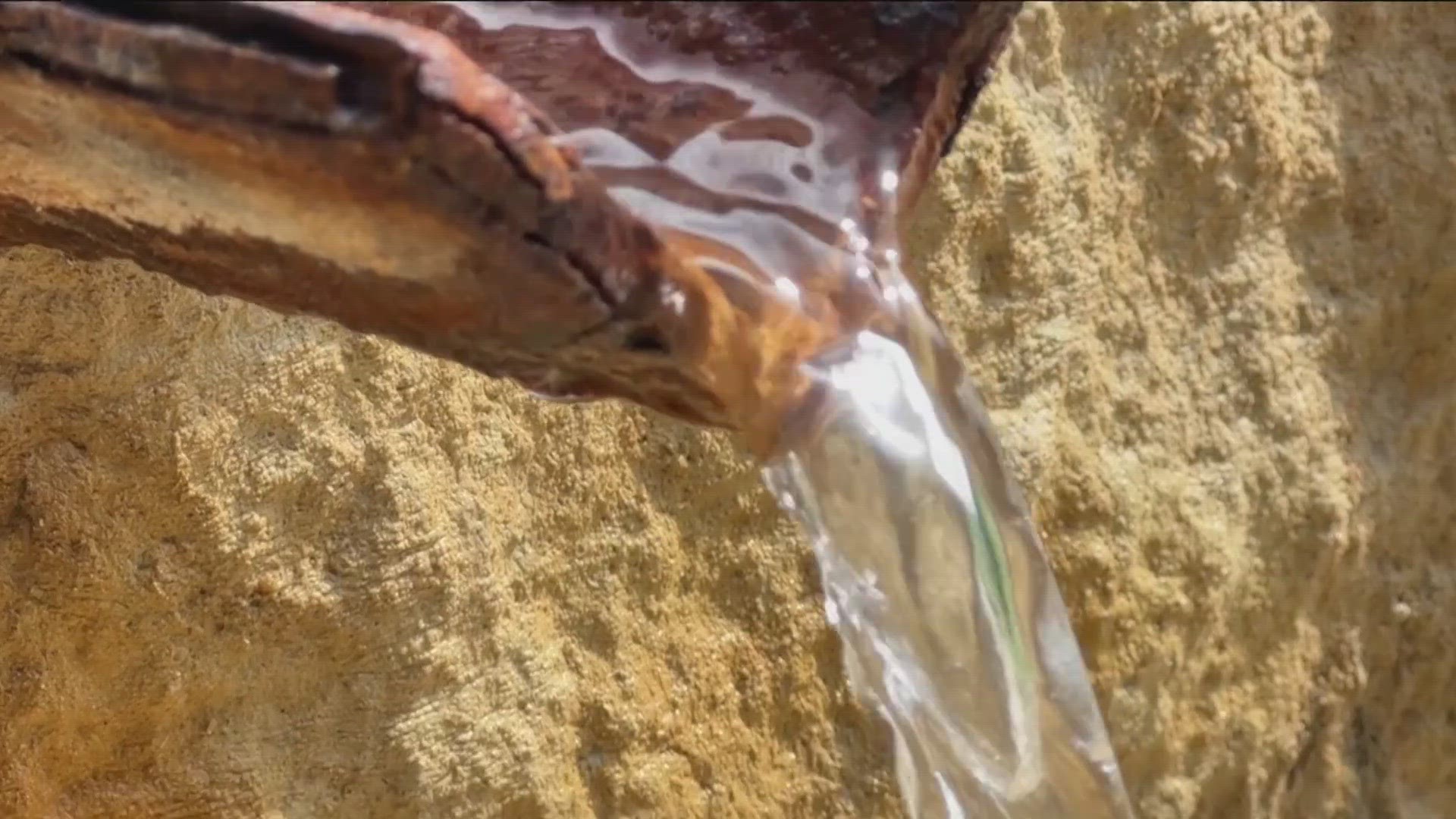AUSTIN, Texas — On Thursday afternoon, the Austin Water Oversight Committee heard ideas on how Central Texas communities can make sure they have enough water for years to come.
Austin Water Director Shay Ralls Roalson announced updates to the City of Austin’s 100-year water plan, called Water Forward.
Planned updates include measures such as expanding water reuse and conservation that will help Austin save water – a task made more challenging as population growth and ongoing drought conditions continue to affect water supply.
Roalson said Austin Water is focused on expanding water reuse and conservation because by reusing water, the City already saves $10 million a year.
In November, the KVUE Defenders reported how the City is using reclaimed water at large facilities, such as the Permitting and Development Center in North Austin.
RELATED: More Central Texas communities are looking at reclaimed water to meet increasing water demand
From there, water from rain and wastewater from within the building is treated and used for non-drinking purposes, like flushing toilets and irrigation.
A new ordinance may soon require new buildings larger than 250,000 square feet to do the same and to install an onsite water reuse system.
However, Roalson said that strategy – and others like it – costs money.
Roalson said as of right now, retail customers pay 15 cents per 1,000 gallons used. Austin Water said it wants to add another 15 cents to what’s called the Community Benefit Charge.
"We're proposing to add another 15 cents per 1,000 gallons that would be dedicated to reclaim water system expansion,” Roalson said.
The Austin City Council is expected to consider several proposals at its March 7 meeting, including that increase, code changes for the Onsite Water Reuse Systems and Reclaimed Water System Connections, reauthorizing existing incentive programs and a reclaimed water agreement with Travis County.
New rates and incentives for reclaimed water system expansions are expected to be part of the new city budget when it’s revealed in August.
Roalson also updated the committee about vacancy rates at the city's three water treatment plants. She said the vacancy rate is around 10%, but the vacancy rate at the Ullrich Water Treatment Plant is higher, sitting at 20%.

